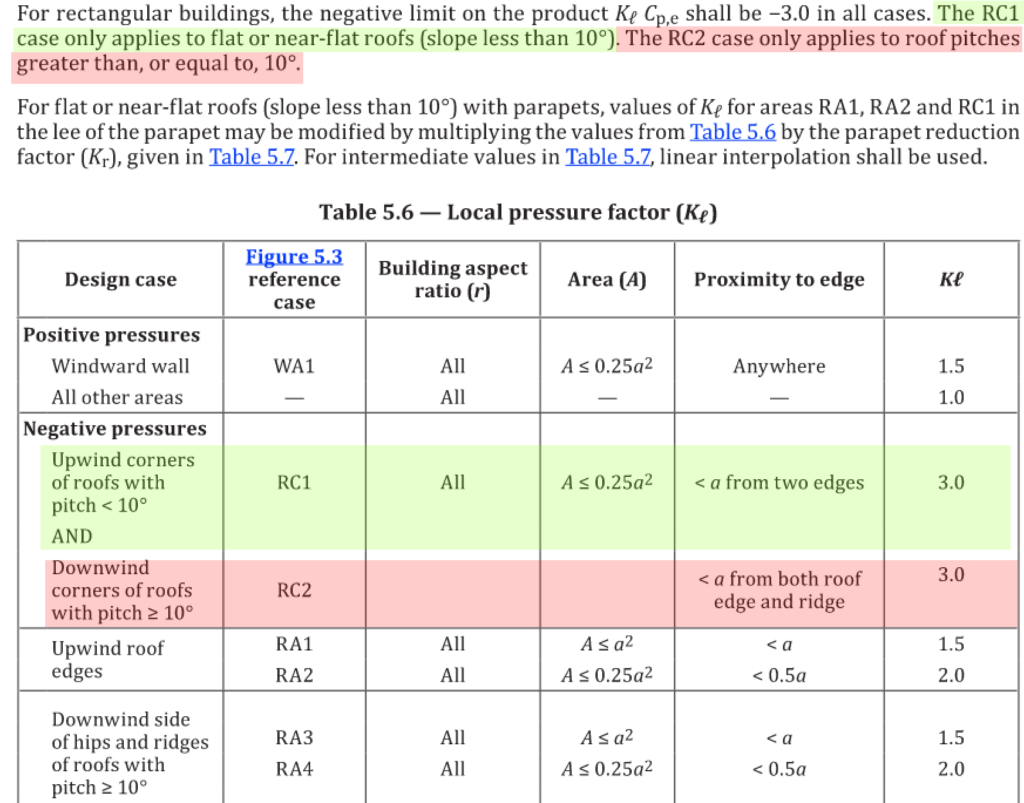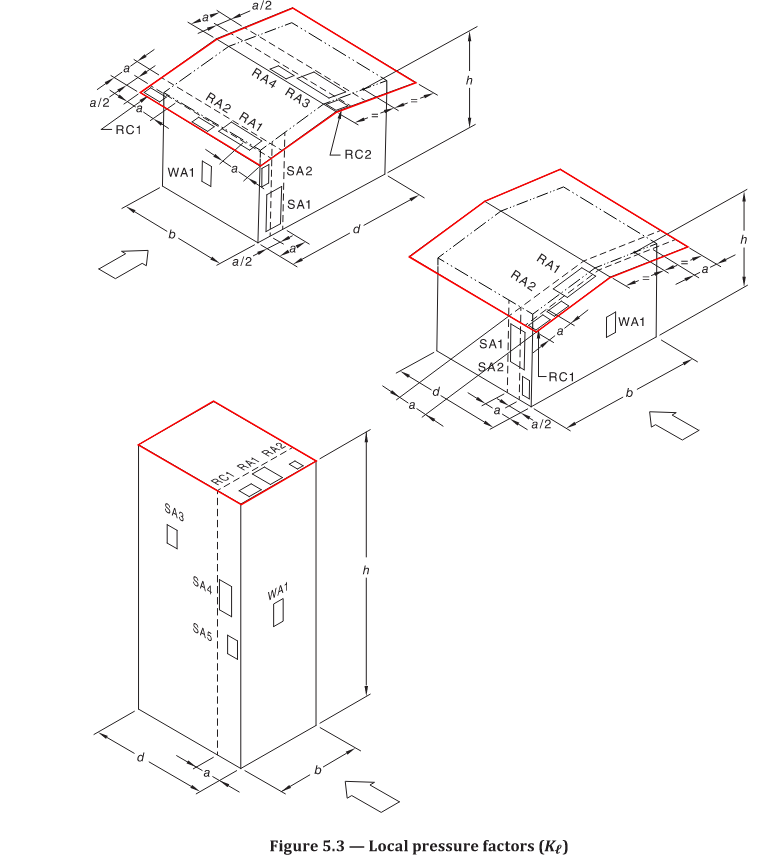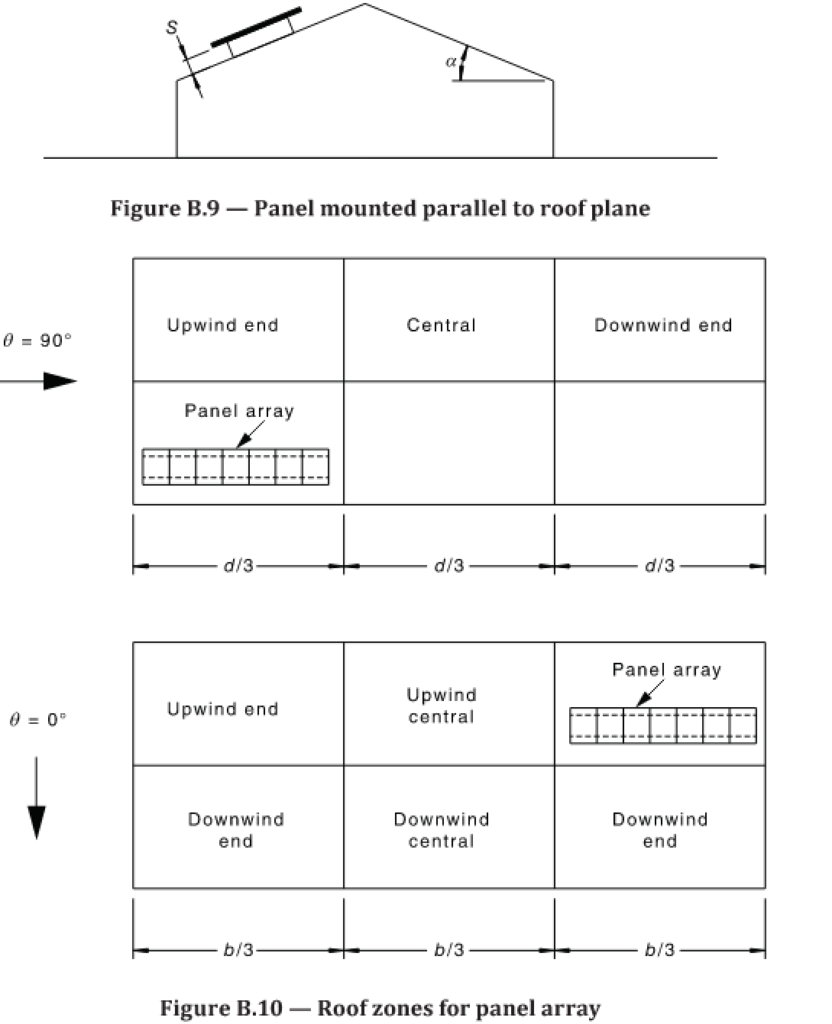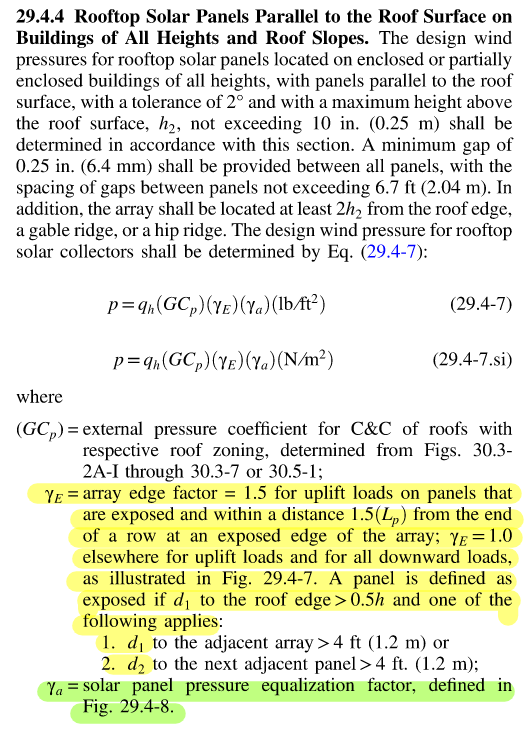Solar Panel Roof Zoning
3-Zone vs. 4-Zone Method for Flush-mount Solar Panel Roof Zoning: Understanding the Industry Approaches
Introduction
In the structural design of flush-mounted solar panels on roofs, engineers use two key approaches to determine wind loads: the 4-zone method and the 3-zone method. These approaches can be derived from AS/NZS 1170.2:2021 and its earlier versions, with additional insight from international standards such as SEAOC PV2-2017 and ASCE 7-22.
This blog post explores the differences between these methods, their applicability, and the considerations for engineers when selecting the most appropriate approach.
1. Overview of the 4-Zone Method (Cladding-Based Approach)
The 4-zone method is based on wind pressures applied to roof cladding and their immediate supports in accordance with Table 5.6 of AS/NZS 1170.2. It divides a roof into four zones:
- Corner Zone – Highest pressure, typically 20% of the smallest plan dimension (b or d), or 2h when both h/b and h/d < 0.20.
- Edge Zone – Increased pressures along the roof edges.
- Intermediate Zone – Pressures lower than edges but higher than the internal zone.
- Internal Zone – The lowest wind pressures on the roof surface.
These pressures are determined using external pressure coefficients (Cpe) from Tables 5.3(A) to 5.3(C) based on roof shape, pitch, and h/d ratios. Local pressure factors (Kl) from Table 5.6 are then applied to refine the results.


2. Overview of the 3-Zone Method (Appendix B6 & D6)
The 3-zone method is provided in Appendix B6 of AS/NZS 1170.2:2021 (previously Appendix D6 in the 2011 version). This method applies to flush-mounted solar panels where both h/b ≤ 0.5 and h/d ≤ 0.5 (e.g., large warehouses). It divides the building into three equal zones (L/3 each):
- End Zones – Higher uplift pressures near the roof edges.
- Central Zone – Reduced pressures in the middle of the roof.
The wind loads are derived from wind tunnel studies rather than adapting cladding pressures from Section 5. The key advantage of this method is that it directly accounts for solar panel aerodynamics, including:
- Increased uplift on edge panels in an array.
- Pressure equalization effects due to airflow beneath the panels.
- A built-in array edge factor of 1.5, as confirmed by Dr. John Holmes in DesignDevise’s correspondence.

3. Why Was the 3-Zone Method Introduced?
The 3-zone method is based on wind tunnel studies conducted by researchers at James Cook University (JCU). Key research papers that support this method:
- Wind Loads on Roofs and Flush-Mounted Solar Panels (S. Ingham, G.N. Boughton, J.D. Ginger, G. Bodhinayake, AWES, 2024).
- Wind Loads on Flush-Mounted Rooftop Solar Panels and Supporting Structural Elements (K. Parackal, A. Omelaniuk, D. Henderson, J. Ginger, ICWE 16, 2023).
These studies found that:
- Solar panels alter roof wind pressures
- Edge panels experience the highest uplift
4. What if the 3-Zone Method Does Not Apply?
If h/b or h/d > 0.5, there is no specific guidance in AS/NZS 1170.2 for solar panels. Engineering judgment is required, and some engineers adopt the 4-zone method based on cladding pressures from Section 5.
DesignDevise correspondence with Dr. John Holmes suggests that the array edge factor of 1.5 is embedded in the 3-zone method, making it more appropriate for large-scale installations where a small number of panels exist on a large roof.
5. The DesignDevise Approach
At DesignDevise, we ensure our designs incorporate both the 3-zone and 4-zone methods when applicable. Our approach includes:
- For 4-zone method: We follow SEAOC PV2-2017 and ASCE 7-22 Clause 29.4.4, applying an array edge factor between 1.0 and 1.5 based on:
- Higher wind pressures near exposed panels.
- Reduction factors for panel gaps and height above the roof.
- The helping effect of pressure equalization from SEAOC PV2-2017:
“Test data shows that a larger gap between panels will reduce the net wind loads, as does reducing the height of the panels above the roof surface.” (SEAOC PV2-2017, Commentary: Figure 12).
This ensures we achieve safe, efficient, and cost-effective designs for our clients.


This post provides a technical basis for selecting between 4-zone and 3-zone methods for flush-mounted solar panel design. Engineers should carefully consider site conditions, code compliance, and the latest research when making their assessments.